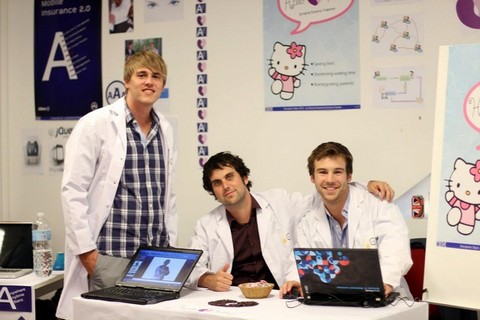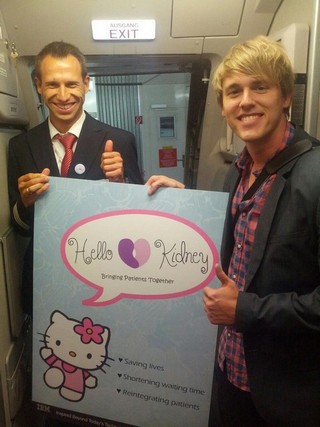The Extreme Blue mission completed! Hello Kidney!
By bogaert|
The Extreme Blue team completed their mission! They worked on a healthcare life-saving idea for kidney patients and called it 'Hello Kidney'. The idea improve the life of kidney patients and improves the sustainability of the social security system Current market situation Renal failure is a very serious illness. The most effective treatment currently known is kidney transplantation. Ideally, a kidney from a deceased donor is used, but the supply of those in spite of joint efforts of national and international organizations is not sufficient for the growing demand. Consequently, the waiting-lists tend to grow significantly. In Belgium, there are today approximately 2,000 people in need of a kidney. The average waiting time for a kidney transplant from a deceased donor is 4 years. The patients suffer during this period and have a significant decreased quality of life from dialysis. Many of them die very soon after undergoing this medical treatment. |
The team: Peter, Harold, and Dominik |
|
The team presenting their idea and prototype |
Kidney donation Deceased persons are today the most common source for kidney donation. Alternatively, patients can get a kidney from a living person, frequently a family member. However, such living donation is only possible when donor and patient are compatible with each other. In most cases are pairs (patient and living donor) incompatible, due to different blood types, or immunological reasons. In these cases patients keep desperately searching for another living donor, or stay on the waiting list for a kidney from a deceased person. Living Donation As the operation techniques improved and the risk for a living donor of a kidney (a genetic or an emotional relative of the patient) was minimized, the number of live-donor transplantations increased. Moreover, some studies show that transplantations from living donors have a higher survival rate, and a better quality of life. |
|
Pairwise-Kidney-Exchange? Occasionally, it happens that unlucky livingdonation pairs got to know each other in the waiting room for dialysis. They can decide to see if the donors were compatible with the patient from the other pair. Interchanging the kidneys of the donors to the recipients from the other pair is called pairwise-kidneyexchange. Today the attitude towards living donor exchange is rapidly changing in the western world, and it gets more and more accepted by patients. With the new platform we aim to bring patients that are on the waiting list and their donors together. The new platform then searches for compatible matches for a pairwise-kidney-exchange. Conclusion Great idea, a story to be continued! |
Peter explaining the benefits during an interview for the Flemish Television |
|
The entire team: students, business mentors, technical mentors, project manager |
Dominik leaving Belgian ground and taking the idea into the plane to spread it around the world |
- bogaert's blog
- Log in to post comments





